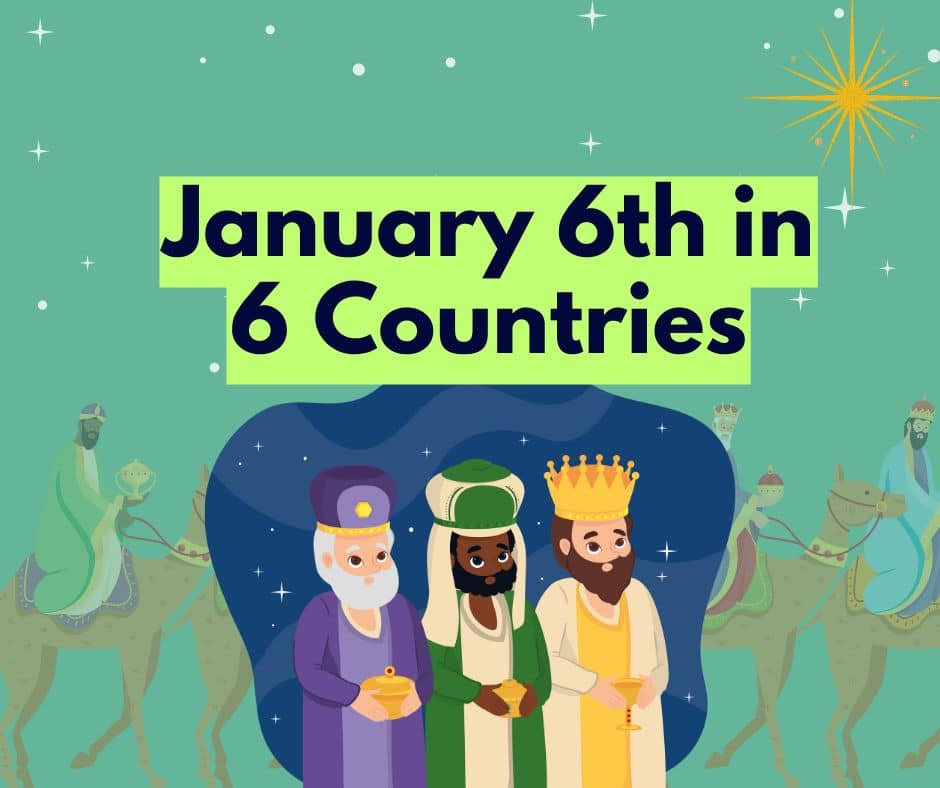

January 6th, known as Epiphany or Three Kings’ Day, is celebrated in different ways by various cultures. This day is the culmination of the Christmas season and commemorates key events in the Christian faith, such as the visit of the Magi or the baptism of Christ. In Malta, for example, the Epiphany is celebrated on the first Sunday of the year and is marked by traditions like Epiphany concerts, the serving of honey rings, and the Adoration of the Magi reenactment, symbolizing the end of the Christmas season. Let’s take a look at how other countries celebrate this special day! [Visit this link for more information]
Spain: The Origin of Three Kings’ Day
As the birthplace of Three Kings’ Day, Spain leads with grand festivities. Known as “Día de los Reyes Magos,” the night before Epiphany features Cabalgatas, spectacular parades with floats reenacting the Magi’s journey. Children leave shoes and notes requesting gifts, often paired with snacks for the camels. Families share Roscón de Reyes, a ring-shaped cake hiding a figurine; the finder is crowned king or queen for the day.
Germany: Sternsinger and Chalk Blessings
In Germany, Epiphany is celebrated with the tradition of the Sternsinger (Star Singers). Groups of children dressed as the Magi go door-to-door, singing carols and collecting donations for charity. After their performance, they write the year and a blessing—C+M+B (Christus Mansionem Benedicat, or “Christ bless this house”)—in chalk above doorways. The letters also signify the traditional names of the Magi: Caspar, Melchior, and Balthazar. In some regions, Epiphany marks the official end of Christmas, with festive meals and the dismantling of decorations.
Mexico: A Blend of Cultures
In Mexico, Epiphany merges Catholic traditions with indigenous practices. Similar to Spain, on January 5th, children place shoes or bags under their beds, filled with treats for the Magi’s camels, and awaken to find gifts in return. On January 6th, families gather to share Rosca de Reyes, a sweet bread hiding a baby Jesus figurine. The person who finds the figurine hosts a Candlemas Day party on February 2nd.
Italy: A Magical Twist with Befana
In Italy, Epiphany is celebrated with La Befana, a kind-hearted witch who delivers gifts to children. She is believed to have been searching for the Christ child and continues her journey each year. Families exchange small gifts, enjoy traditional desserts like Panettone, and participate in church services. Befana brings a touch of magic to this religious holiday.
France: The King’s Cake Tradition
Epiphany in France revolves around the Galette des Rois, a puff pastry filled with almond cream. A charm hidden inside the cake crowns the finder as king or queen for the day. Families reserve an extra slice, known as the “slice for God,” in case an unexpected guest arrives. The celebration emphasizes sharing, hospitality, and joy.
Greece and Bulgaria: Diving for the Cross
Water blessings are central to Epiphany celebrations in Greece and Bulgaria. Priests throw a wooden cross into rivers or seas, and participants race to retrieve it, with the finder receiving a blessing. This tradition symbolizes Christ’s baptism and the spiritual cleansing of water.
For more information about our services contact the inlingua Malta team on info@inlinguamalta.com












